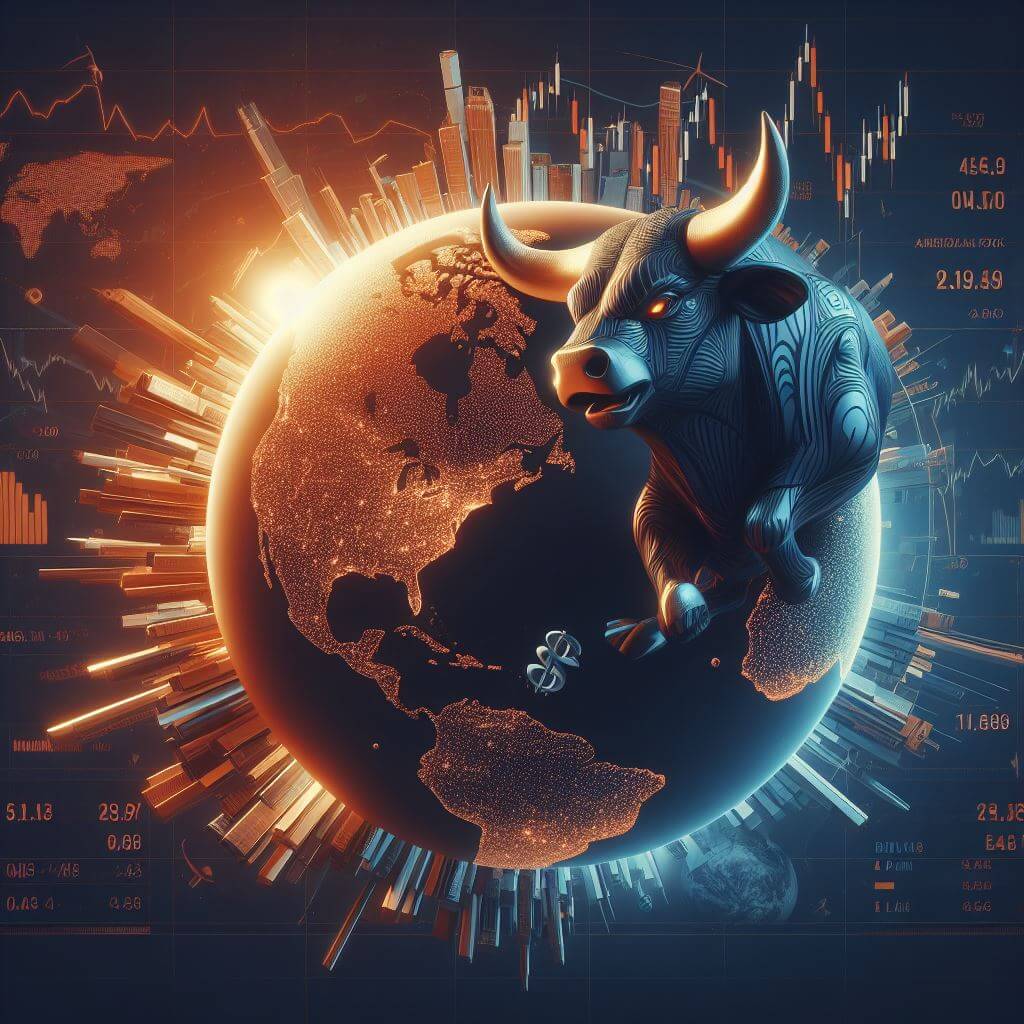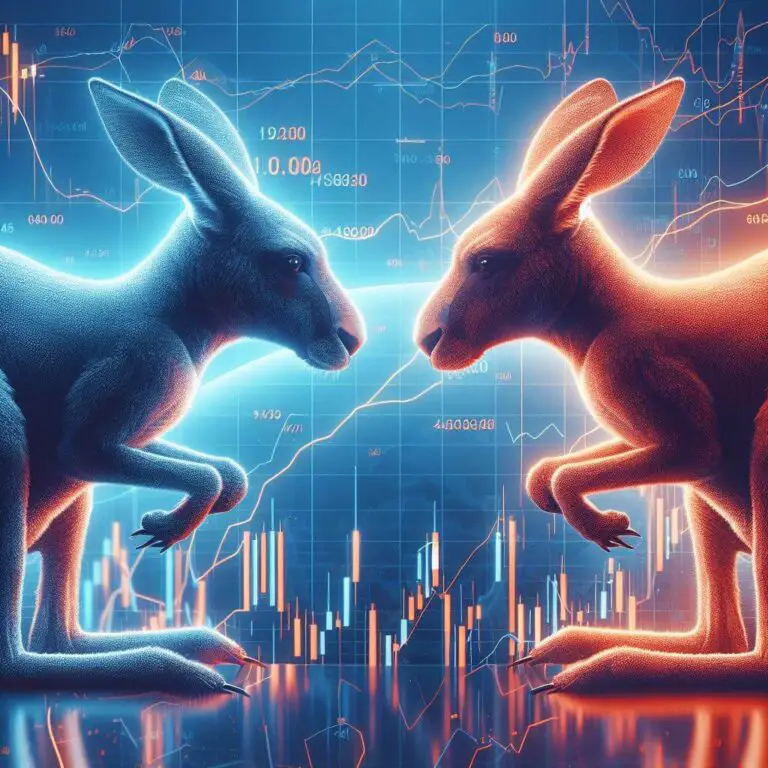IVV vs VGS – An Investor’s Dilemma
Last Updated on 27 July 2024 by Ryan Oldnall
The United States stock market has had remarkable growth over the past decade, even in the face of challenges such as the Covid-19 pandemic.
Despite experiencing a significant decline in the early part of 2020, the annualized 10-year total return, as of today, stands at an impressive 12.51% [1].
Similarly, the Global MSCI World ex Australia Index has delivered a 10-year return of 11.08% as of August 31, 2023 [2].
In this article, we will conduct a performance comparison between two highly popular ETFs: IVV and VGS. IVV tracks the widely recognized US powerhouse, the S&P 500, while VGS follows the MSCI World ex Australia Index.
Using data from Yahoo Finance and Morningstar [3][4], Our analysis aims to provide a comprehensive overview of both ETFs, assisting you in determining which one better aligns with your investment objectives.
VGS Vanguard Review
Vanguard MSCI Index International Shares ETF, often referred to as VGS, is a popular choice among investors seeking exposure to global equities.
VGS closely tracks the performance of the MSCI World ex Australia Index, offering a diversified portfolio of equities from various countries and sectors.
Launched in 2014, the VGS ETF is offered by Vanguard, a colossal global investment management firm with a track record of serving more than 50 million investors worldwide [3].
Vanguard has had a presence in Australia since 1996 and introduced one of its first ETFs, VAS in 2009, establishing an extensive portfolio totaling over A$10 trillion in assets under management (AUM) [3], [4].
Vanguard’s commitment to the Australian market remains evident through its recent introduction of a super fund in October 2022. I have since performed an extensive Vanguard Super Review.
IVV Review
The BlackRock iShares S&P 500 ETF, commonly known as IVV, is a popular choice for investors looking to invest in the U.S. stock market.
IVV closely follows the performance of the S&P 500 Index, which includes 500 of the largest and most influential American companies.
IVV was introduced by BlackRock in 2000, a prominent global investment management firm. As of March 2023, BlackRock manages approximately $9.09 trillion in assets [5].
In 2018, IVV was ‘domiciled’ in Australia, this in effect made it simpler for Australian investors to invest in IVV. By domiciling IVV in Australia, the handling of tax documentation and paperwork has been greatly simplified, resulting in substantial advantages for Australian investors.
Additionally, in December 2022, IVV underwent a 15:1 stock split. This means that for each IVV share held, investors received 15 shares in return.
While this action doesn’t result in any immediate profit or loss, the primary advantage of a stock split is that it allows individual investors to buy more shares of the company at a lower cost.

ETF Management Fees
ETF management fees represent the annual costs associated with managing and promoting an ETF, impacting your overall returns. It’s wise to choose ETFs with lower fees because this ensures that a larger portion of your earnings remains in your pocket.
ETFs are often favored for their cost-effectiveness compared to other investment options. To understand the fee structure, it’s essential to review an ETF’s Product Disclosure Statement (PDS).
In the case of IVV and VGS, they both offer low management fees. VGS, for instance, has a 0.18% management fee. This means that with a $10,000 investment in VGS ETFs, you’d only pay $18 in fees.
IVV, on the other hand, boasts one of the lowest management fees in the Australian ETF market, standing at 0.04%. This means that on a $10,000 investment in IVV, you would only incur $4 in fees.
VGS Dividend History
The current VGS dividend yield (distribution) is 2.14%, which is slightly lower than the index’s dividend yield of 2.33%. This distribution is paid out on a quarterly basis.
IVV Dividend History
The current dividend yield for IVV is 1.68%, slightly lower than the index yield of 1.73%. For the average Australian investor, these yields may appear lower, especially when compared to A200 vs VAS.
This is primarily because American companies do not typically pay dividends at the same rate as many Australian companies do.
IVV VS VGS – Performance Chart

IVV VS VGS – Annual Total Returns

From 2018 to 2023, the performance of VGS and IVV has varied significantly, reflecting the broader market trends and economic conditions. In 2018, VGS saw minimal growth at 0.46%, whereas IVV performed somewhat better with a return of 4.55%.
The strong market recovery in 2019 benefited both ETFs, with VGS delivering a notable 29.13% return and IVV achieving an impressive 32.28%. The impact of the COVID-19 pandemic in 2020 led to more modest gains, with VGS up by 5.75% and IVV at 6.92%.
2021 was a remarkable year for both, with VGS gaining 29.67% and IVV soaring to 37.17%, highlighting a robust rebound. However, 2022 proved challenging, as VGS dropped by -12.37% and IVV fell by -9.03%, driven by rising inflation and economic uncertainties.
In 2023, both ETFs experienced a strong recovery, with VGS returning 22.93% and IVV at 20.14%, signaling renewed investor confidence and a healthier market outlook.
IVV VS VGS – Total Annualised Returns

When examining the annualized returns of VGS and IVV, we observe distinct performance trends over various timeframes.
Year-to-Date (YTD) Returns: In 2023, VGS has achieved a YTD return of 22.93%, showing strong performance amid a recovering global market. However, IVV has outpaced VGS with a YTD return of 20.14%, reflecting a slightly more robust performance in the U.S. market. The difference between these two returns is 2.79%, with IVV leading.
One-Year Returns: Over the past year, VGS has returned 19.98%, a notable performance. Yet, IVV has surpassed it with a one-year return of 23.90%. This performance gap of 3.92% highlights IVV’s superior performance over this period, largely driven by strong U.S. equities.
Three-Year Annualized Returns: In the three-year period, VGS has delivered an annualized return of 11.24%, reflecting steady growth in global equities. In contrast, IVV has posted a higher three-year annualized return of 14.12%. The 2.88% difference indicates that IVV has performed better in the medium term.
Five-Year Annualized Returns: Looking at the five-year horizon, VGS has achieved an annualized return of 13.07%. IVV, however, leads with a five-year annualized return of 15.88%, outshining VGS by 2.81%. This extended period further underscores IVV’s superior long-term performance.
ETF Holdings
ETFs comprise a basket of individual stocks that form the core assets of the ETF. The composition of an ETF primarily depends on the index it’s designed to mirror, its investment goals, and, sometimes, specific screening criteria like ESG considerations.
In many cases, certain ETFs will hold larger positions in specific stocks. This applies to both IVV and VGS ETFs. Despite containing hundreds of stocks, a significant portion of their investments is concentrated in a select few.
Conversely, some ETFs follow an equal-weighting strategy, where all the underlying stocks in the ETF are given equal importance. This ensures that, in case one stock outperforms while others lag, a process known as “rebalancing” occurs to maintain equal weight.
An example of such an Australian ETF is Vaneck’s MVW. I delve into this topic in greater detail in my review of MVW vs VAS – What Is The Best Australian ETF? The findings may surprise you.
IVV VS VGS Sector Allocation

When comparing the sector allocations of VGS and IVV, notable differences in focus and strategy become apparent. VGS spreads its investments across a variety of sectors, with technology holding a significant, yet moderate, 25.92% of the portfolio.
Other sectors such as financial services (14.53%) and consumer cyclical (10.16%) are also well-represented, indicating a balanced approach aimed at capturing diverse growth opportunities while maintaining stability.

In contrast, IVV exhibits a more concentrated sector strategy, allocating a substantial 34.31% to technology. This heavy weighting reflects a clear emphasis on tech giants and their growth potential.
The ETF also shows notable allocations to consumer cyclical (10.27%) and financial services (11.87%), but the overarching theme is a more pronounced focus on the technology sector compared to VGS.
VGS Holdings

When assessing the top 10 holdings of VGS, it’s evident that the ETF leans heavily towards major technology firms. The portfolio demonstrates significant exposure to prominent U.S. tech giants, despite its global investment scope.
For instance, if you were to invest $1,000 in VGS, the allocation would be roughly $46.10 in Microsoft, $44.40 in Apple, and $43.10 in NVIDIA. The top holdings continue with notable stakes in Amazon, Meta Platforms, and several other major players. This distribution highlights VGS’s strong tilt towards leading tech companies.
IVV Holdings

In comparison, IVV’s top 10 holdings also feature dominant tech firms but with different weightings. Investing $1,000 in IVV would translate to approximately $71.90 in Microsoft, $69.80 in Apple, and $66.70 in NVIDIA.
The ETF further includes substantial positions in Amazon, Meta Platforms, and other key companies. IVV’s holdings underscore its focus on large-cap U.S. stocks, reflecting its tracking of the S&P 500 Index.
Both ETFs showcase significant investments in top technology firms, but the specific weightings and additional holdings reveal their unique investment strategies and index affiliations.
IVV vs VGS – Top 10 Holdings As Total Percentage of ETF

When comparing the top 10 holdings of VGS and IVV, a clear difference in concentration emerges. IVV’s top 10 stocks make up 36.08% of the ETF, indicating a more concentrated investment in these key positions. In contrast, VGS’s top 10 holdings account for 23.46% of the ETF, showcasing a broader distribution across its holdings.
In terms of total equity, VGS features a massive 1,429 stocks, highlighting its extensive diversification. On the other hand, IVV, with 506 holdings, offers a more streamlined approach.
Despite the difference in number of stocks, both ETFs display a significant level of diversification, with IVV’s focus on top performers and VGS’s wide-spread approach. This contrast in holding concentration reflects their distinct investment strategies and risk profiles.
Summary – Do You Invest in VGS, IVV or Both?
IVV and VGS have quite similar top 10 holdings, even though they follow different indexes.
IVV, which mirrors the S&P 500, has significant investments in the top 10 U.S. market stocks. These mainly consist of tech-related shares that have shown impressive growth and profits recently.
I believe IVV is a solid investment choice due to its exposure to 500 US equities and its strong long-term track record. Additionally, its exposure to the tech sector, which is not as prominent in the Australian domestic market, adds diversification and growth potential to the investment.
Similarly, VGS also has a comparable top 10 list, although these holdings make up a smaller portion of its overall investments.
This similarity is mainly because VGS has a substantial portion of its ETF invested in the U.S. stock market. As shown in the visual above, about 74.06% of VGS’s ETF is in U.S. stocks.
So, even though VGS follows a global index, a significant part of that index remains highly focused on American companies, primarily due to their large size.
Investing in a global Vanguard ETF like VGS, which includes over 1500 international companies, provides diversification benefits not found in many other ETFs. It’s worth noting that VGS doesn’t cover the Australian domestic market.
For an investor deciding between IVV and VGS, it’s an intriguing choice: do you invest in one or both? Since VGS allocates more than 70% of its assets to the US market, be cautious when considering other international ETFs like IVV in your portfolio.
Holding both IVV and VGS together could accidentally lead to an over-concentration in tech stocks and the overall US market.
Given that both ETFs have substantial US market exposure, this overlap might be excessive in an investor’s portfolio. Nevertheless, both ETFs have shown strong performance and offer competitive fees for what they provide.
- https://www.spglobal.com/spdji/en/indices/equity/sp-500/#overview
- https://www.msci.com/documents/10199/c27eeea3-ad05-4944-bef4-fbaef9ef34ec
- https://www.vanguard.com.au/corporate/
- ,https://www.vanguard.com.au/personal/invest-with-us/etf?portId=8205
- https://www.morningstar.com.au/investments/security/NYSE/BLK








